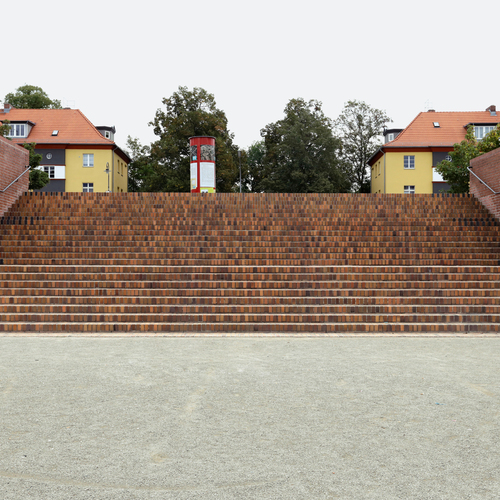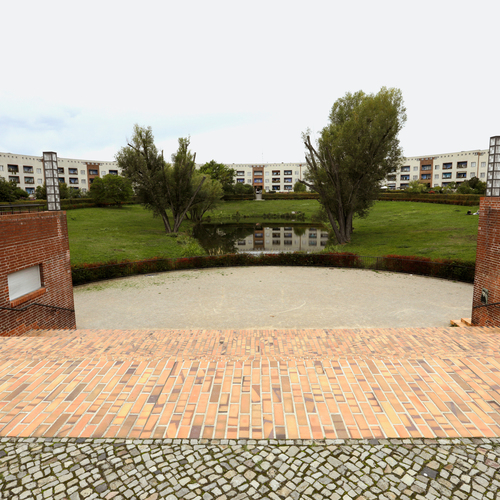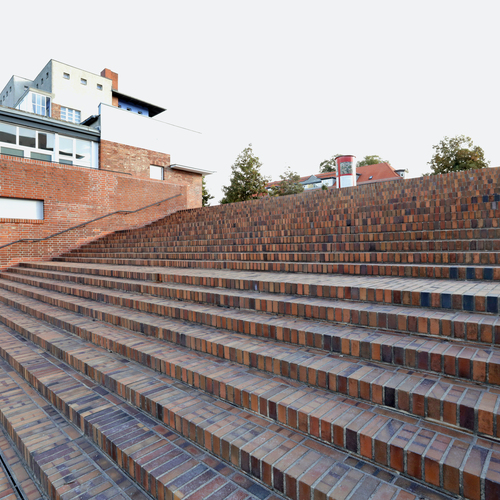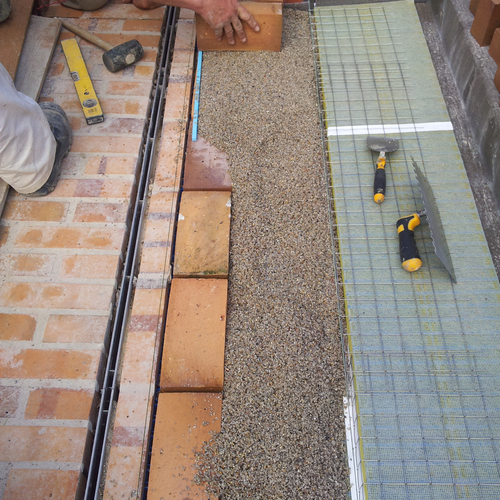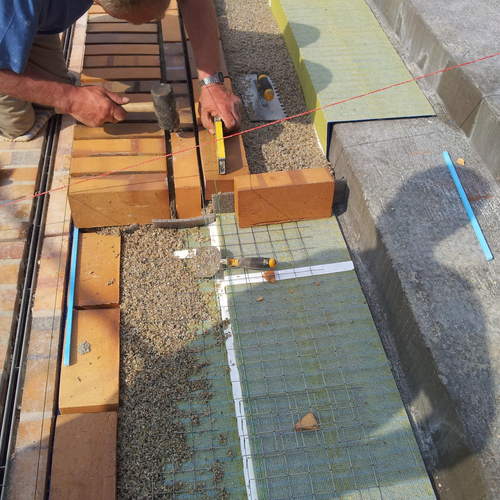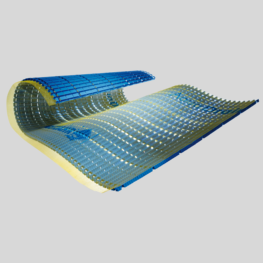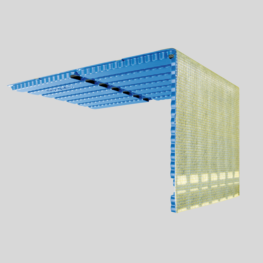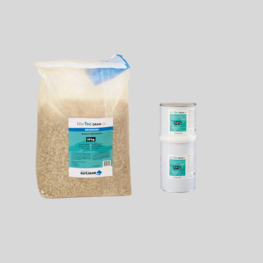Gutjahr drainage systems protect the historic steps of the Horseshoe Estate
The Britz Horseshoe Estate was constructed in Berlin between 1925 and 1933 as one of the first estates for social housing construction. It was added to the list of UNESCO world heritage sites in 2008 for its pioneering architecture concept. The ensemble also includes a stairway in the outdoor area of the estate. 90 years after the construction of the stairs, reliable drainage is now provided by the AquaDrain SD step drainage system from Gutjahr.
In 1920s Berlin, newly built large estates promised to be a solution to the tremendous housing shortage. They were also an alternative to the tenements, which had narrow back yards and often catastrophic hygiene conditions. The construction costs had to be kept down to make the new estates affordable for the tenement block residents, which was a major challenge for urban planners and architects – and one of the reasons for their functional architecture, which is still characteristic today.
The Horseshoe Estate in Berlin-Britz in the Neukölln district was named after the horseshoe-shaped core of the settlement, and is considered to be one of the inaugural social housing projects. Even now, it is still regarded as an outstanding example of modern urban development, and the progressive “New Construction” after the First World War. The settlement has been a UNESCO World Heritage Site since 2008.
Stairways blocked and unusable
During the course of large-scale renovation of the outdoor areas with the "Horseshoe Pond" and the surrounding green areas, the pond was to be returned to its original condition. The stairways were also to be renovated. In spring 2012, before the renovation work began, most of them were unusable and blocked. The tapering stairway, which is about 15 to 20 metres wide, consists of 24 steps and two intermediate landings, forming the access to the pond at the open end of the "horseshoe". Nature conservation and monument protection requirements both had to be taken into consideration during the renovation of the garden areas.
The challenge of laying with a low construction height
The new covering on the stairway, which consisted of a specially modelled clinker brick with special dimensions, was to be laid directly onto the old steps, which had been exposed as far as the edge areas. At the same time, the original character of the facility was not to be changed. Among other things, a low construction height was therefore required
The challenge was to provide reliable drainage despite the low construction height, and protect the new clinker brick covering from backed-up water. Because of the difficult initial situation, the "Baudenkmalpflege Prenzlau" construction company contacted the Gutjahr experts directly. Together with the client, Gutjahr and the construction company decided to use the AquaDrain SD passive capillary drainage system, since the experts unanimously agreed that drainage mortar alone could not provide protection from damage.
Step drainage for effective water removal
This was also shown by a study carried out by the SKZ Technology Center in Würzburg during this period. In a test setup, a comparison was made between stair structures with drain mortar alone and those with drain mortar plus step drainage. The result was clear: with step drainage, the drainage performance was several times better than it was without step drainage. It was also shown that the riser legs soaked through extremely quickly without drainage – representing a tremendous risk of damage. Expensive renovation work would have been the result with a stairway as big as the one at the Horseshoe Estate.
In order to prevent this, AquaDrain SD step drainage was used. The pre-formed angled elements were installed on the steps and risers beneath the covering. The drainage was to run via the two platforms, where the AquaDrain EK surface drainage with a construction height of 16 mm practically leads on the water. The seepage water is collected in gravel packing at the bottom of the stairs and drains away.
The advantages of this approach: Both of the Gutjahr drainage products are designed for use with moisture-sensitive covering materials, and raise the entire covering. As a result, the drainage channels form a defined cavity, through which water can flow away significantly faster and more effectively than it can without this additional measure. At the same time, backed-up water on the waterproofing level does not migrate back into the covering structure via the bedding layer. This is particularly effective in preventing efflorescence, frost damage and long-lasting moisture stains on the covering.
The stainless steel step grating which is inserted into the bedding layer also produces a kind of reinforced bracket, which prevents the joints between the tread and the kick from cracking and leading to unsightly limescale streaks on the stairways.
Another challenge in this project: the installers did some pioneering work, because up until then no clinker laying had been implemented with the AquaDrain SD stair drainage system. Gutjahr created a test setup in the application technology department for this purpose. After successful testing it was clear: Gutjahr supports the renovation in Berlin.
The challenge of the installation height
As with many other renovation projects, the low installation height was a problem. But the tradesmen were able to solve this problem using the Gutjahr step drainage system and a special drainage mortar. A cement-based drainage mortar was ruled out because it requires a layer thickness of at least 50 mm when it is laid on drainage systems. On the other hand, MorTecDrain, an epoxy resin-based drainage mortar, can be used from a layer thickness of 25 mm – i.e. half the thickness of the cement-based single-grain mortar. For example, a structure that was lower and safer at the same time could be implemented for the Horseshoe Estate stairway together with the AquaDrain SD drainage system.
Top condition, even eight years after renovation
The demanding renovation of the stairway was completed in 2012 after two months, and had fulfilled all expectations: all of the monument preservation requirements had been taken into consideration, the character of the historic staircase was retained with the new covering, and thanks to the reliable water drainage via the drainage system and the drainage mortar, the "new" stairway is still in great condition eight years after the renovation, impressing not only the residents of the Horseshoe Estate, but all of the visitors as well – the historical green areas of the world cultural heritage site are freely accessible to everyone.
All expectations fulfilled
Visitors can see it for themselves: Even eight years after the renovation, the stairs are still in great condition.
Products used
Similar project reports
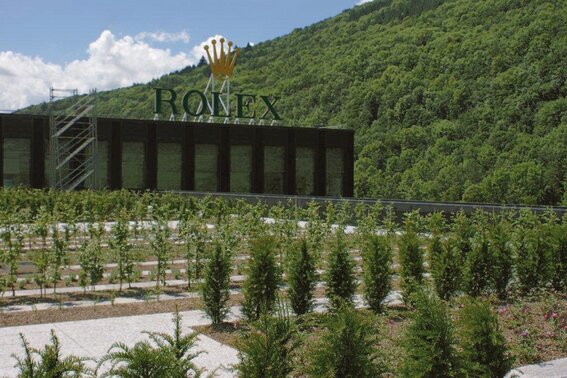
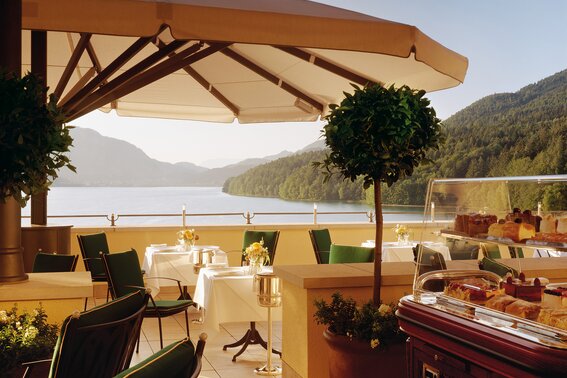
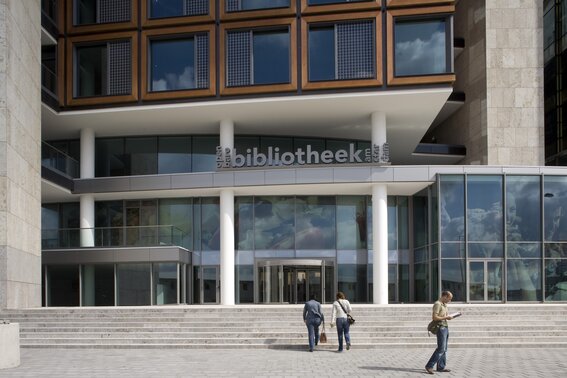
![[TRL] Gutjahr Systemtechnik GmbH - Komplettsysteme für den Außen- und Innenbereich](/build/images/gutjahr-logo.d62773db.svg)

